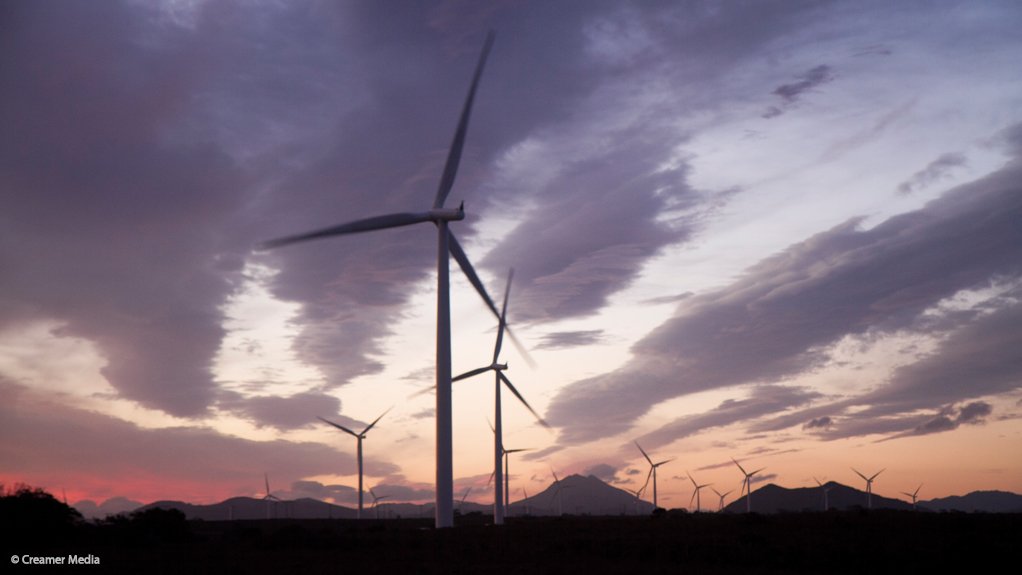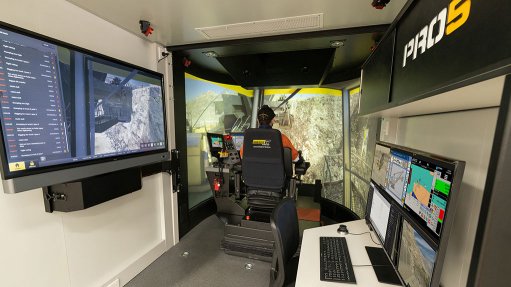Renewables investment in 2015 more than covers global power demand growth for first time
A new report by the International Energy Agency (IEA) states that global electricity sector investment rose 4% to a record $682-billion in 2015 – a year when overall investment in the energy sector fell to $1.8-trillion, from $2-trillion, mainly as a result of lower oil and gas investment.
The inaugural ‘World Energy Investment 2016’ report, which will be produced yearly by the IEA, shows that power generation accounted for over 60%, or $420-billion, of total electricity investment, while spending on electricity networks made up the balance.
Investment in renewables-based generating capacity accounted for more than two-thirds of power generation, despite edging down by 2% to $288-billion. In inflation-adjusted terms, however, renewables investment was “virtually unchanged compared to 2011”.
In addition, as a result of unit cost declines and technological progress, investment in 2015 resulted in nearly 40% more capacity and will generate one-third more electricity than that in 2011. Globally, the weighted average unit investment cost of onshore wind fell by 20% between 2010 and 2015, while that of utility-scale solar photovoltaic (PV) dropped by more than 60% – however, cost trends vary by country, technology and type of project.
The report states that, for the first time, the investment in renewables-based capacity generated more than enough electricity to cover global electricity demand growth in 2015.
“When combined with the power expected from the new nuclear plants brought online, and after accounting for nuclear retirements, the low-carbon generation investment in 2015 produces around 400 TWh on an annualised basis. While this signals progress in meeting climate objectives, it is not yet consistent with the transition to a low-carbon energy system envisaged in the Paris Climate Agreement reached at the end of 2015,” the report warns.
Of the renewables investment, wind power comprised the largest share of total investment in 2015, at 37%, followed by solar PV at 34%. Hydropower accounted for over 20%, while other sources (bioenergy, solar thermal electricity, geothermal) made up nearly 10%.
The report states that an analysis of electricity investments indicates a “major shift” in investment towards low-carbon sources of generation.
“At $288-billion in 2015, or over 40% of the total, renewables are firmly established as the largest source of power investment,” the authors state.
By contrast, fossil-fuel generation investment fell 8% to $111-billion last year, the lowest level in over five years, owing to fewer gas-fired capacity additions.
“While gas power expanded in the US, weak fundamentals and insufficient market design in Europe and underdeveloped infrastructure in developing countries have constrained investment globally.”
NUCLEAR ADDITIONS
The IEA report also notes that nuclear capacity additions, which rose to over 10 GW, reached their highest level in over two decades, representing investment of $21-billion.
At 8 GW, China accounted for most of the additions in 2015, as well as most of the over 65 GW in construction globally at the end of the year.
“Nuclear power represents a major component of the [Chinese] government’s strategy in building a low-carbon energy system, benefiting from a preferential regulated tariff. During 2016 through July, 3.9 GW more nuclear capacity came online; another 23 GW is under construction.”
Russia, meanwhile, added one new plant, with a capacity of 0.9 GW, in 2015. In addition, Russia’s draft energy strategy envisions an increase in the share of nuclear power in total generation from 17% in 2015 to between 19% and 21% in 2035.
In the US, the first new reactor in two decades was connected to the grid in 2016. However, while around 5 GW remain under construction, all in southeast states with regulated, single-buyer markets, six reactors with a combined capacity of over 5.7 GW are due to close during the period 2017 to 2019. “Most of these closures are in states in the Northeast and Midwest and are motivated by economic reasons. Some states are considering regulatory reforms to try to avoid these closures,” the reports states.
Meanwhile, electricity networks investment grew to over $260-billion in 2015. Some 55% of spending on transmission and distribution was to meet new demand, 35% to upgrade ageing assets and 10% to integrate variable renewables.
Investment in electricity storage worldwide in 2015 totalled over $10-billion, compared with an average of $8.5-billion between 2010 and 2014.
In 2015, 4 GW of electricity storage were commissioned globally, boosting installed capacity to over 150 GW. But the authors stress that these estimates cover grid-scale storage only, as consumer investments in behind-the-meter residential storage has not yet reached a measurable scale.
Pumped hydro storage remained the largest component of global storage investment, accounting for 97% of total cumulative capacity in 2015. Compressed air storage, power to gas (mostly hydrogen) and batteries make up the rest.
Interestingly, there was also $1-billion-worth of grid-scale battery investment during the year. “Grid-scale battery investment . . . remains relatively small, at only 0.4% of networks’ spending, but has grown ten-fold since 2010,” the report notes.
Article Enquiry
Email Article
Save Article
Feedback
To advertise email advertising@creamermedia.co.za or click here
Comments
Press Office
Announcements
What's On
Subscribe to improve your user experience...
Option 1 (equivalent of R125 a month):
Receive a weekly copy of Creamer Media's Engineering News & Mining Weekly magazine
(print copy for those in South Africa and e-magazine for those outside of South Africa)
Receive daily email newsletters
Access to full search results
Access archive of magazine back copies
Access to Projects in Progress
Access to ONE Research Report of your choice in PDF format
Option 2 (equivalent of R375 a month):
All benefits from Option 1
PLUS
Access to Creamer Media's Research Channel Africa for ALL Research Reports, in PDF format, on various industrial and mining sectors
including Electricity; Water; Energy Transition; Hydrogen; Roads, Rail and Ports; Coal; Gold; Platinum; Battery Metals; etc.
Already a subscriber?
Forgotten your password?
Receive weekly copy of Creamer Media's Engineering News & Mining Weekly magazine (print copy for those in South Africa and e-magazine for those outside of South Africa)
➕
Recieve daily email newsletters
➕
Access to full search results
➕
Access archive of magazine back copies
➕
Access to Projects in Progress
➕
Access to ONE Research Report of your choice in PDF format
RESEARCH CHANNEL AFRICA
R4500 (equivalent of R375 a month)
SUBSCRIBEAll benefits from Option 1
➕
Access to Creamer Media's Research Channel Africa for ALL Research Reports on various industrial and mining sectors, in PDF format, including on:
Electricity
➕
Water
➕
Energy Transition
➕
Hydrogen
➕
Roads, Rail and Ports
➕
Coal
➕
Gold
➕
Platinum
➕
Battery Metals
➕
etc.
Receive all benefits from Option 1 or Option 2 delivered to numerous people at your company
➕
Multiple User names and Passwords for simultaneous log-ins
➕
Intranet integration access to all in your organisation




















